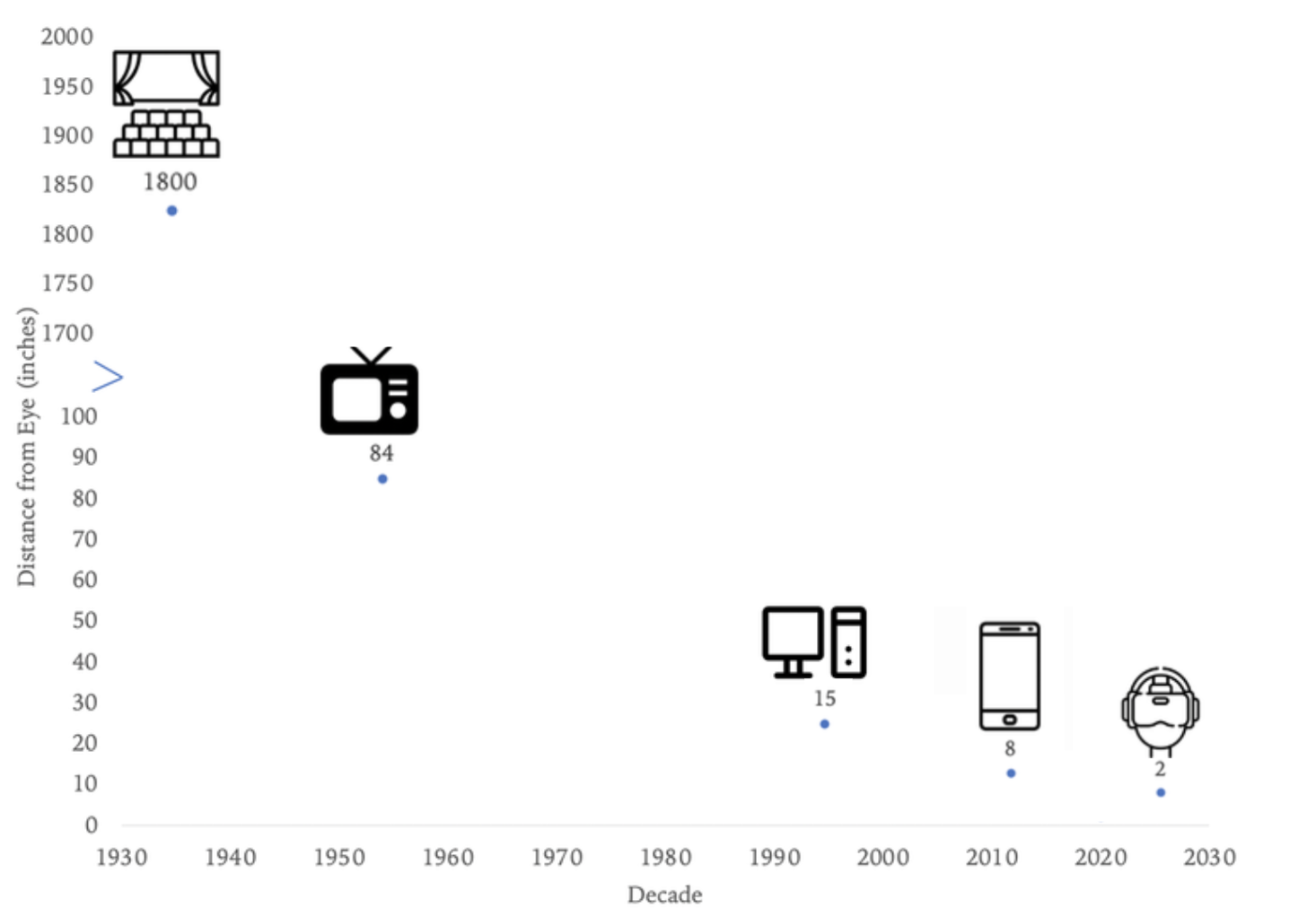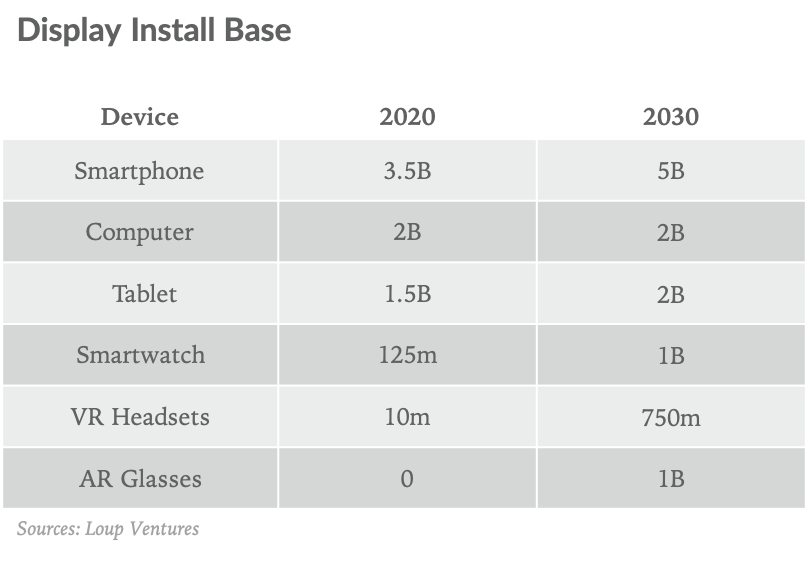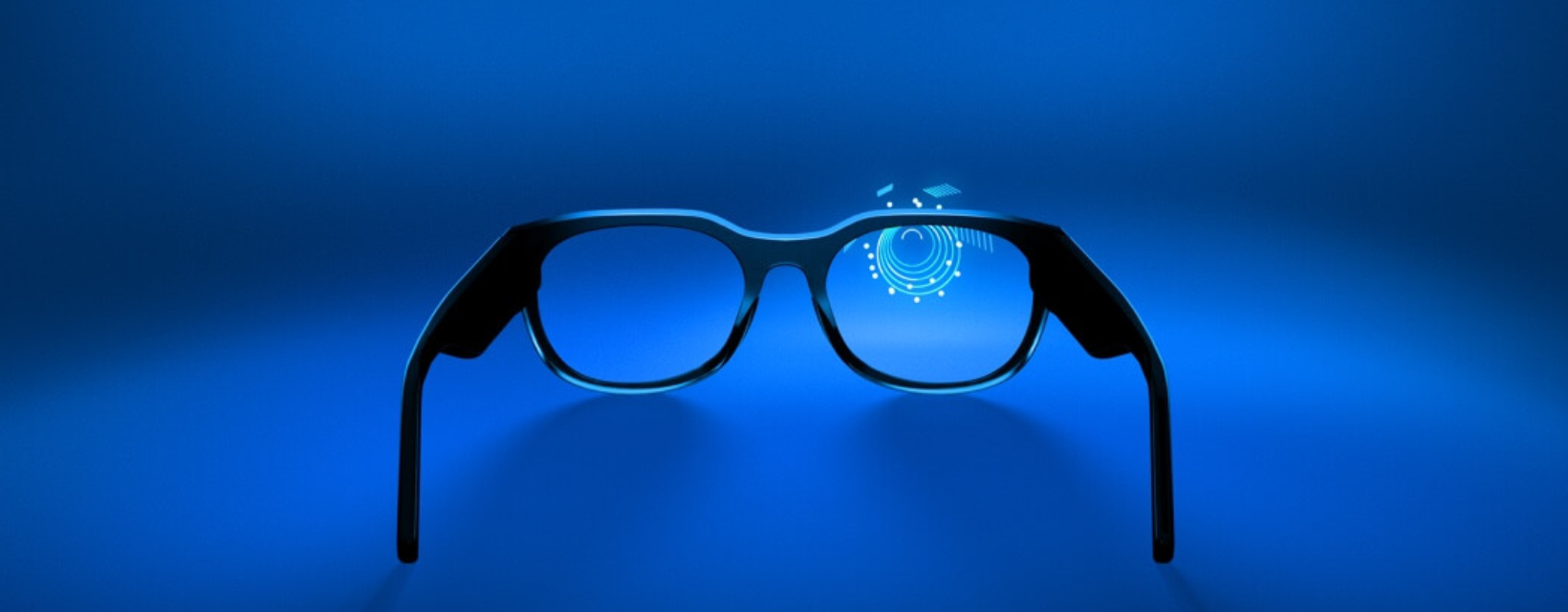From movie theaters in the 1930s to living room TVs in the ’50s; from desktop computers in the ’80s to mobile phones in our pockets today, screens have moved increasingly closer to our eyes. In that time span, the average screen-to-eye distance has decreased from over 100 feet to less than 1 foot. Over the next decade, that distance is expected to shrink even further as VR headsets and AR glasses bring screens within inches of our eyes.

We believe that by 2030 there will be about 750 million VR headsets and 1 billion AR glasses in use, up from 10 million and 0 respectively, today.

The dilemma
On one hand, phones, VR, and AR are enabling a tech-enriched lens through which to view the world. On the other hand, a question emerges: are screen displays closer to our eyes impacting our wellness? Most of us likely remember a parent telling us to move back from the TV screen when we were children. There is a natural tendency to worry about the potential harmful effects of technology, especially when it concerns our vital organs. In the case of screens, we care because there are still outstanding questions as to how diminishing screen-to-eye distance affects the health of our eyes. Eye health is vital because it affects our overall energy and mood. When our eyes feel tired, our whole body feels tired.
Are the concerns justified?
One concern with screens moving closer to our eyes is exposure to blue light. Blue light is high-energy, short-wavelength, visible light that is found in the sun (the biggest source), LED lights, TVs, computers, tablets, phones, and e-readers, among other things. Blue light plays an essential role in regulating biological and psychological processes, most notably our sleep-wake cycles. Throughout the day, blue light helps boost alertness and mood, whereas at night it works to suppress the release of melatonin, a darkness-induced hormone that helps us fall and stay asleep. There is credible research that shows blue light exposure from screens before going to bed can negatively affect sleep quality.
Digital eye strain is another effect of screens closer to our eyes. It occurs when our eyes try to hold an object (i.e., a screen) in focus for long periods of time. The closer an object gets and the more blue light it emits, the harder our eyes must work to keep it in focus. As we do this, our eye’s blink rate decreases significantly, leading to dry, irritated, and tired eyes.
Possible damage to the eye’s retina, as well as other eye diseases like cataracts, are also concerns with long-term blue light exposure. That said, existing research establishing blue light as a risk factor is inconclusive at best.
While companies and researchers are still in exploration mode regarding any serious long-term health impacts from closer screens and more blue light intake, the bottom line is that they are having an effect on device users’ energy levels and sleep cycles.
What should industry players do about it?
While doctors say the best way to address these concerns is to simply take breaks from screens throughout the day and to not use them for at least an hour before going to bed, few people are likely to follow these guidelines. Our devices are simply too addicting.
This naturally raises the question of what tech and display companies can do to address these concerns. For starters, all new mobile devices, tablets, and computers now offer standard night-mode features that allow users to reduce the amount of blue light emitted. Further, display companies are working with device makers to create high-resolution displays that emit less blue light.
That said, creative solutions, as well as greater industry and consumer awareness regarding any health risks associated with closer screens and blue light, are needed to provide a safer, more comfortable experience for users. We believe this need will only increase with the expected adoption of AR and VR devices in the coming years.
Separately, we look to big tech to help consumers navigate blue light’s impact, and hope the industry can come to a standard to keep us better aware of the health impacts from the devices we use.
